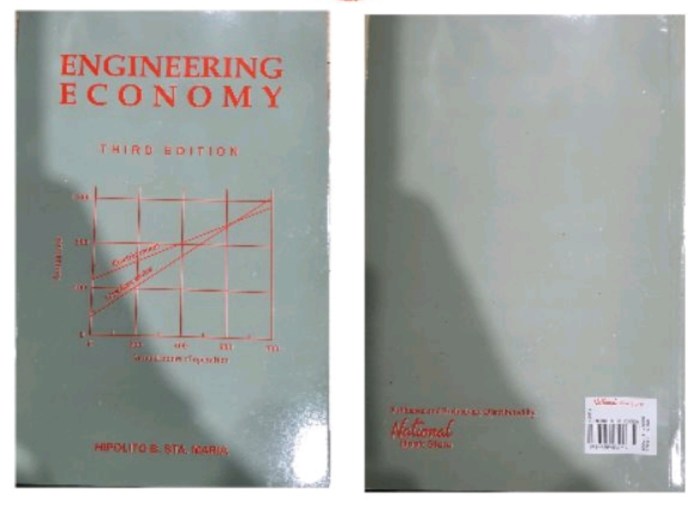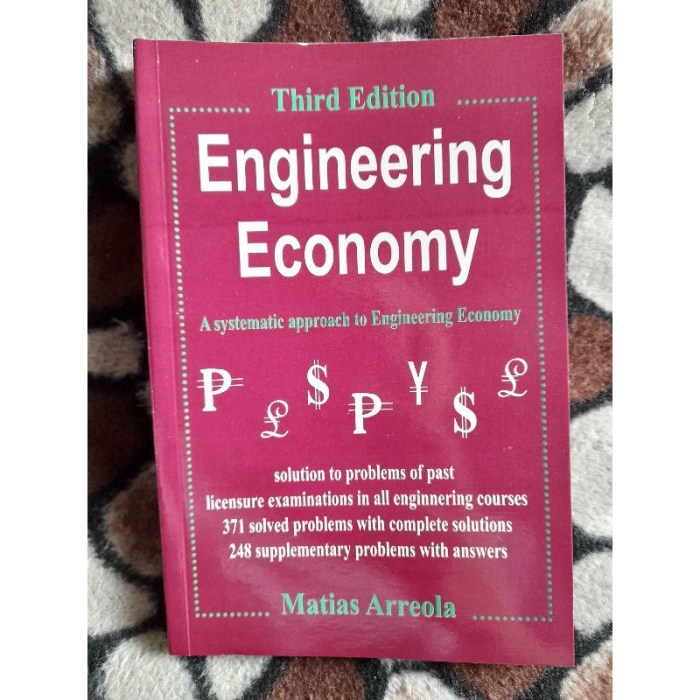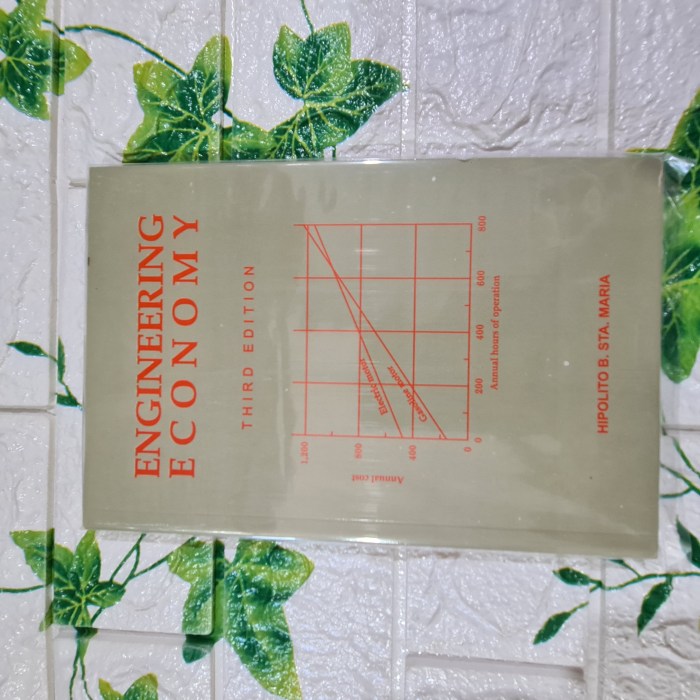Basics of Engineering Economy 3rd Edition PDF unlocks the fundamental principles and practical applications of engineering economy, empowering readers to make informed decisions in project evaluation and financial planning. This comprehensive guidebook sets the stage for a journey into the realm of economic analysis, providing a solid foundation for understanding the time value of money, interest and equivalence, and risk assessment.
Throughout its pages, Basics of Engineering Economy 3rd Edition PDF delves into the intricacies of project analysis, exploring various methods for evaluating profitability and incorporating risk into decision-making. By engaging with real-world examples and case studies, readers gain a practical perspective on the application of engineering economy principles in diverse industries.
1. Introduction
Engineering economy is the application of economic principles to engineering decision-making. It helps engineers evaluate the economic feasibility of projects and select the best alternatives.
Engineering economy plays a critical role in decision-making processes by providing a framework for comparing different options and determining the most cost-effective solution.
2. Time Value of Money

The time value of money (TVM) is the concept that money available today is worth more than the same amount of money in the future due to its potential earning power.
The TVM is used to compare cash flows over time using methods such as present value analysis, future value analysis, and annual equivalent analysis.
Calculating Time Value of Money
- Present Value (PV): Calculates the current worth of a future cash flow.
- Future Value (FV): Calculates the future worth of a present cash flow.
- Annual Equivalent (AE): Calculates the uniform annual cash flow that is equivalent to a series of cash flows.
3. Interest and Equivalence
Interest is the cost of borrowing money, and it plays a significant role in engineering economy.
Interest rates are used to calculate the present and future values of cash flows, and to determine the equivalent cash flows of different alternatives.
Types of Interest Rates
- Simple Interest: Interest is calculated only on the principal amount.
- Compound Interest: Interest is calculated on both the principal and the accumulated interest.
Calculating Equivalent Cash Flows
Equivalent cash flows are cash flows that have the same present or future value. They can be used to compare different alternatives and determine the most cost-effective solution.
4. Economic Analysis of Projects

Economic analysis of projects involves evaluating the economic feasibility of a project by comparing its costs and benefits.
The steps involved in economic analysis include identifying the project’s cash flows, estimating the project’s costs and benefits, and evaluating the project’s profitability.
Methods for Evaluating Project Profitability
- Net Present Value (NPV): Calculates the present value of the project’s cash flows minus the initial investment.
- Internal Rate of Return (IRR): Calculates the discount rate that makes the NPV of the project equal to zero.
- Payback Period: Calculates the number of years it takes for the project to generate enough cash flow to cover the initial investment.
5. Risk and Uncertainty

Risk and uncertainty are inherent in engineering projects, and they can significantly impact the project’s outcome.
Engineering economy provides methods for assessing and mitigating risk, and incorporating risk into economic analysis.
Assessing and Mitigating Risk
- Risk Assessment: Identifying and evaluating potential risks that may affect the project.
- Risk Mitigation: Developing strategies to reduce or eliminate the impact of risks.
Incorporating Risk into Economic Analysis
Risk can be incorporated into economic analysis using techniques such as sensitivity analysis, scenario analysis, and Monte Carlo simulation.
6. Special Topics in Engineering Economy
Engineering economy is applied in various industries, and it has seen emerging trends and advancements in recent years.
Special topics in engineering economy include applications in different industries, emerging trends, and case studies of innovative uses of engineering economy.
Applications in Different Industries
- Manufacturing: Evaluating the cost-effectiveness of new equipment and processes.
- Construction: Analyzing the profitability of construction projects.
- Healthcare: Assessing the economic impact of new medical technologies.
Emerging Trends and Advancements, Basics of engineering economy 3rd edition pdf
- Sustainability: Incorporating environmental and social factors into economic analysis.
- Big Data: Using big data to improve risk assessment and decision-making.
- Artificial Intelligence (AI): Utilizing AI to automate economic analysis and improve accuracy.
Commonly Asked Questions: Basics Of Engineering Economy 3rd Edition Pdf
What is the significance of engineering economy?
Engineering economy plays a crucial role in decision-making processes by providing a systematic framework for evaluating the economic viability of projects and investments.
How does the time value of money impact engineering economy?
The time value of money recognizes that the value of money changes over time due to factors such as inflation and interest rates, which must be considered in economic analysis.
What are the different methods for evaluating project profitability?
Common methods for evaluating project profitability include Net Present Value (NPV), Internal Rate of Return (IRR), and Payback Period.